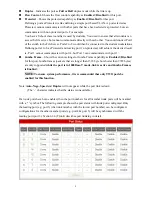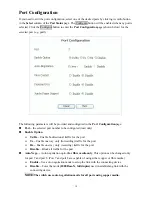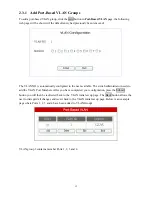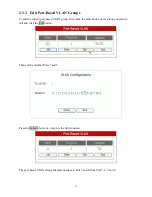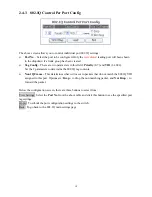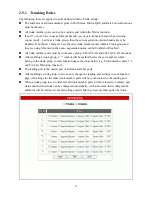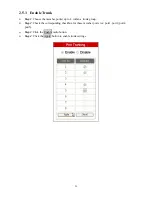
23
2.5.1
Trunking Rules
The following rules are applied to ports defined within a Trunk Group:
n
The attributes of all trunk member ports in Port Status, Mirror, QOS and Rate Control functions
must be the same.
n
All trunk member ports can not be a capture port within the Mirror function.
n
If port 7 or port 8 are in use as fibre media and you want to truncate them with ports using
copper (port1—port6) as a trunk group, the n the auto-negotiation option should always be
Enabled; If both port 7 and port 8 are the only trunk member ports within a Trunk group and
they are using fibre media, the n auto- negotiation option can be Enabled or Disabled.
n
All trunk member ports must be in the same group in Port VLAN and 802.1Q VLAN functions.
n
After enabling a trunk group, a ‘
*
’ symbol will be marked before the port numbers which
belong to the trunk group in most function pages shown as below (e.g. Trunk member ports 3, 4
and 5 in Port Mirroring function).
n
The leading port is the master port of all trunk member ports.
n
After enabling a trunk group, users can only change the leading port settings in each function
page. All settings for the other trunk member ports will be synchronized to the leading port.
n
When a trunk group is set to disabled, all trunk member ports will be released to ordinary port
status and their functions can be configured individually. At that moment, the ir configuration
attributes will be retained to the last settings used while they were member ports of a trunk.

